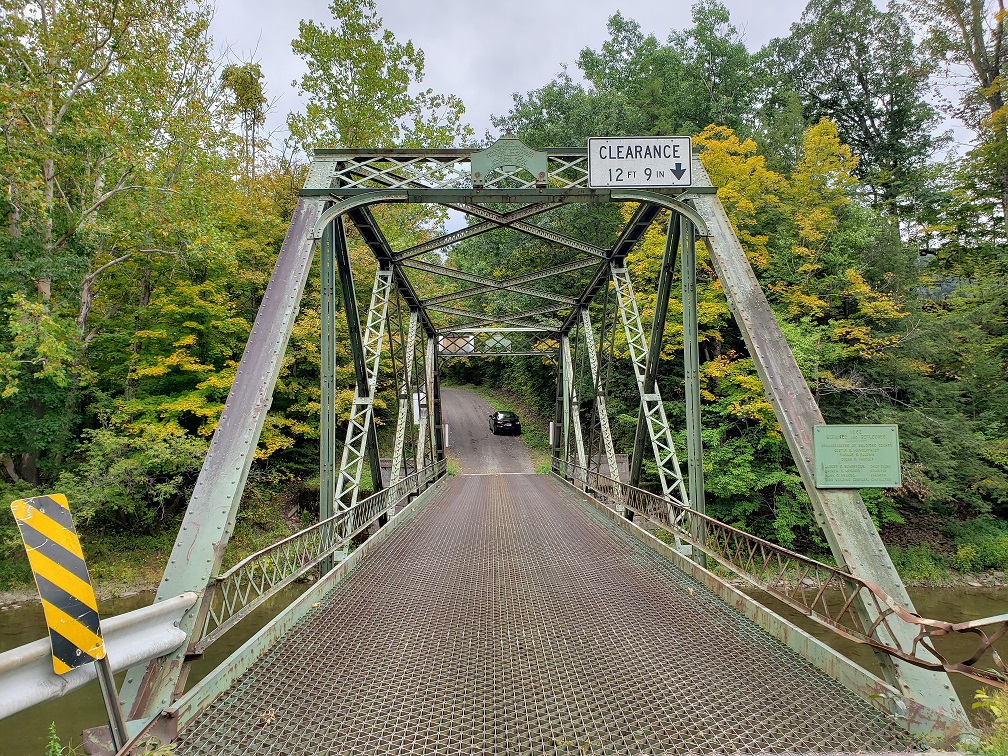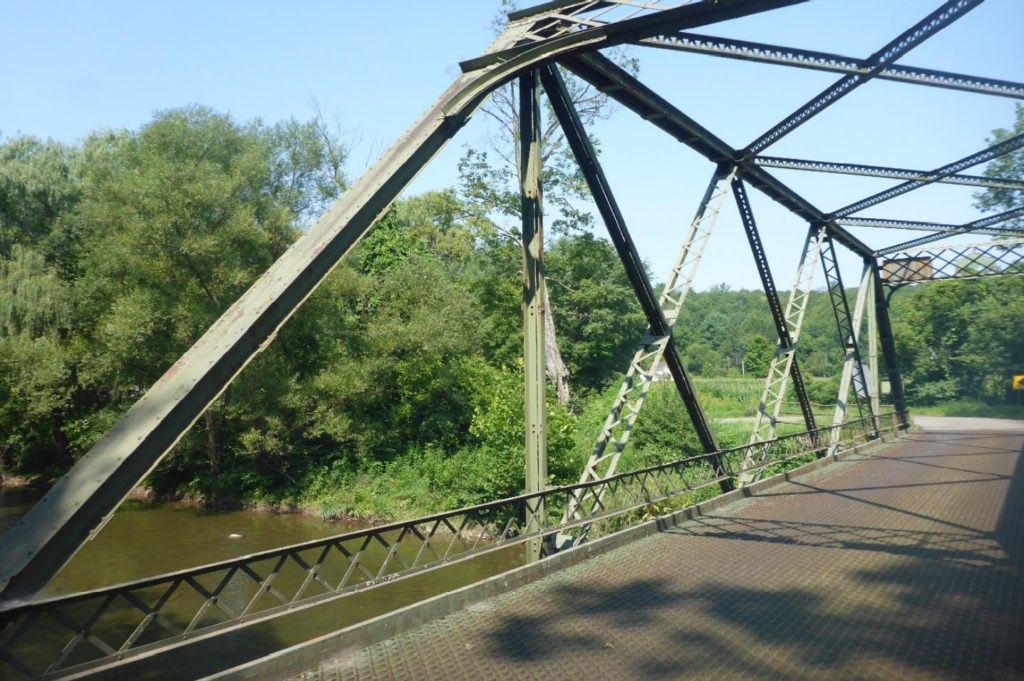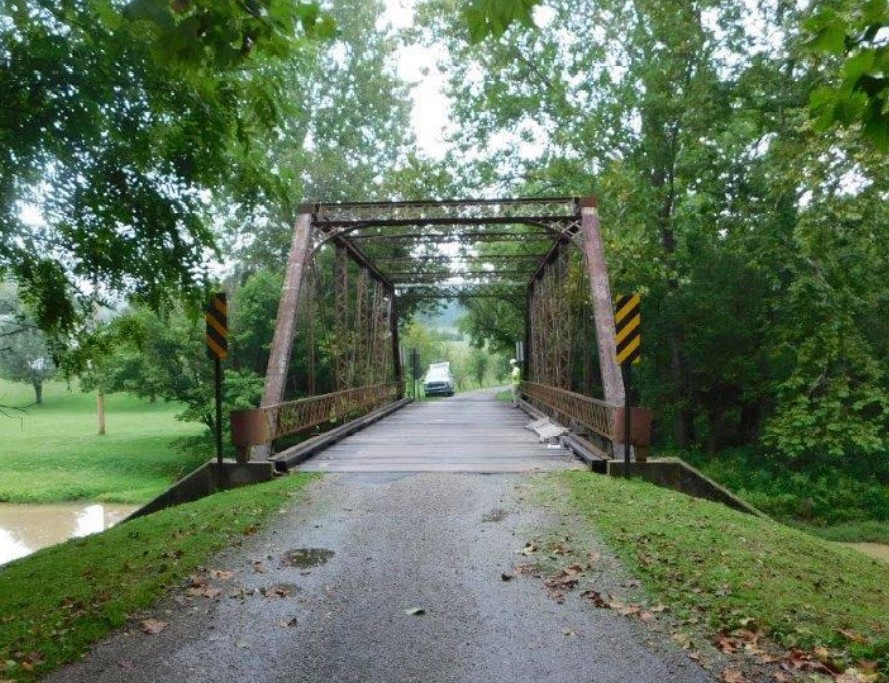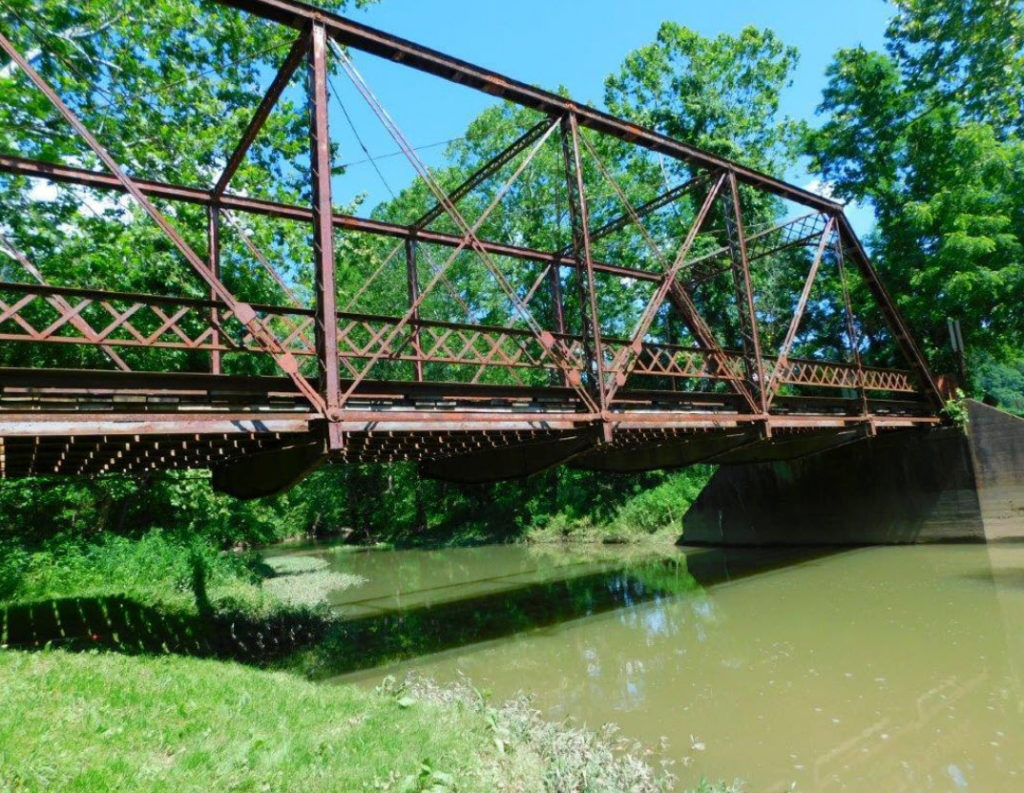If you have been following the PA SHPO Blog, then you have probably read about the Metal Truss Bridge Management Plan (Management Plan) and the ongoing effort by PennDOT and the PA SHPO to preserve historic metal truss bridges whenever feasible. Recently, as of 2021, a new federally funded program has been created to support the rehabilitation of these bridges.
Here’s the quick background.
In 2017, PennDOT, in conjunction with the Federal Highway Administration (FHWA) and the PA SHPO, published the Management Plan. The plan was the result of a multi-year effort to address the accelerating loss of historic metal truss bridges throughout the state. The plan serves a planning tool to help maximize the chances of rehabilitation for historic metal truss bridges.
During development of the Plan, PennDOT and SHPO staff members met with local bridge owners, planning partners, including Metropolitan Planning Organizations (MPOs) and Rural Planning Organizations (RPOs), and interested parties. Local owners were made aware of the historic importance of bridges under their care, and information on the condition and use of the bridges was collected.
During the meetings it became clear that one of the biggest challenges in the rehabilitation of locally owned metal truss bridges was securing federal and/or state funding through the Statewide Transportation Improvement Program (STIP). As a result, plans formed for a dedicated program to fund the rehabilitation of locally owned historic metal truss bridges.
Four years later, and the idea of such a program has become a reality.
The new program, named the Historic Metal Truss Bridge Capital Rehabilitation Program was created as part of the 2021 Twelve-Year Program (TYP) update to promote the rehabilitation of historic metal truss bridges. Set to last for ten years, the program will receive $1 million in 2023 and 2024, then $2 million per year starting in 2025, bringing the grand total for the program to $18 million.
Funding for the program comes from Federal Surface Transportation Program (STP) discretionary funding (SPIKE funds) and does not require a local match. Additional funding may be added to the Program as mitigation when a metal truss bridge cannot be rehabilitated to meet the needs of a crossing.
The primary goal of the program is to support metal truss bridges for continuous vehicular use; however, the program can also provide support for adaptive re-use projects seeking supplemental financial support.
Bridge projects to benefit from the program are selected by a committee comprised of representatives from PennDOT, FHWA, and PA SHPO. Committee members look at several parameters when considering a bridge for funding:
- Rating in the Historic Metal Truss Bridge Management Plan as “exceptional” or “high” preservation priority
- Visible to the public
- Has strong local support, including local commitment to maintain the bridge following rehabilitation
For more details on the Historic Metal Truss Bridge Capital Rehabilitation Program, check out Program Overview and Frequently Asked Questions.
At the time of this publication, the program is funding two metal truss bridge rehabilitation projects for continuous vehicular use: Con Roads Bridge in Bradford County and Iams Hill Road Bridge in Washington County.
Con Roads Bridge, also known as Bradford County Bridge #13, is located in Franklin Township. Built in 1904 and attributed to the Owego Bridge Company, Cons Road Bridge is a riveted double intersection Warren thru truss spanning 93 feet over Towanda Creek.

Cons Road Bridge is eligible for the National Register of Historic Places under Criterion C for its engineering significance. The character defining features of the bridge, those elements that showcase the bridge’s historic significance and contribute to its National Register eligibility, include the truss form and method of truss member end connection, the floor beam connection details, the bridge plaque, portal, bracing, and railing.

Iams Hill Road Bridge, also known as Evans Bridge or Ten Mile Creek Bridge No. 40, is located in Amwell Township, Washington County. Built in 1890, Iams Road Bridge is a single span, pin connected Pratt thru truss spanning 94 feet across Ten Mile Creek.

Iams Hill Road Bridge is also eligible for the National Register of Historic Places under Criterion C for its engineering significance. The character defining features of the bridge include the truss form, method of connection, top and bottom chords, “fishbelly” built-up floor beams, vertical and diagonal members, upper lateral struts, portal bracing, and decorative bridge railing.

Both Cons Road Bridge and Iams Hill Road Bridge will be rehabilitated in accordance with the Secretary of the Interior Standards for the Treatment of Historic Properties to maintain their character defining features. PennDOT, FHWA and PA SHPO hope to utilize the Historic Metal Truss Bridge Capital Rehabilitation Program to support as many historic metal truss bridge rehabilitation projects as possible in the coming years.
Today’s post is by Guest Contributor Veronica Martin. Veronica is the Historic Bridge Program Manager for the Pennsylvania Department of Transportation. She manages several programs including the historic bridge marketing and Historic Metal Truss Bridge Capital Rehabilitation programs.
The Cons Road Bridge has all the construction elements of the old four-span Betzwood Bridge that once crossed the Schuylkill River at Valley Forge. The road deck curb, the latticed railing and the deck grating, even the color green it used to be. The Betzwood bridge had a pedestrian board walk on the Abrahms Locks side of the bridge. It survived Hurricane Agnes while its Rt 322 viaduct replacement next to it was under construction. One night during the hurricane Agnes I heard a rumble and sound of screeching steel as I was trying to go to sleep in my bed. Next day, lots of people were gathered to look at the ruin of a temporary pier that was part of the construction. There was a crane parked on it and it all fell down into the water. I’ll bet they left the crane on that pier just like they parked trains on the railway bridges to keep them weighed down against being swept away by the flood. The crashing sound was unforgettable. The Cons Road bridge brings me back to area we used to frequent. Even the overcast day. Thank you.